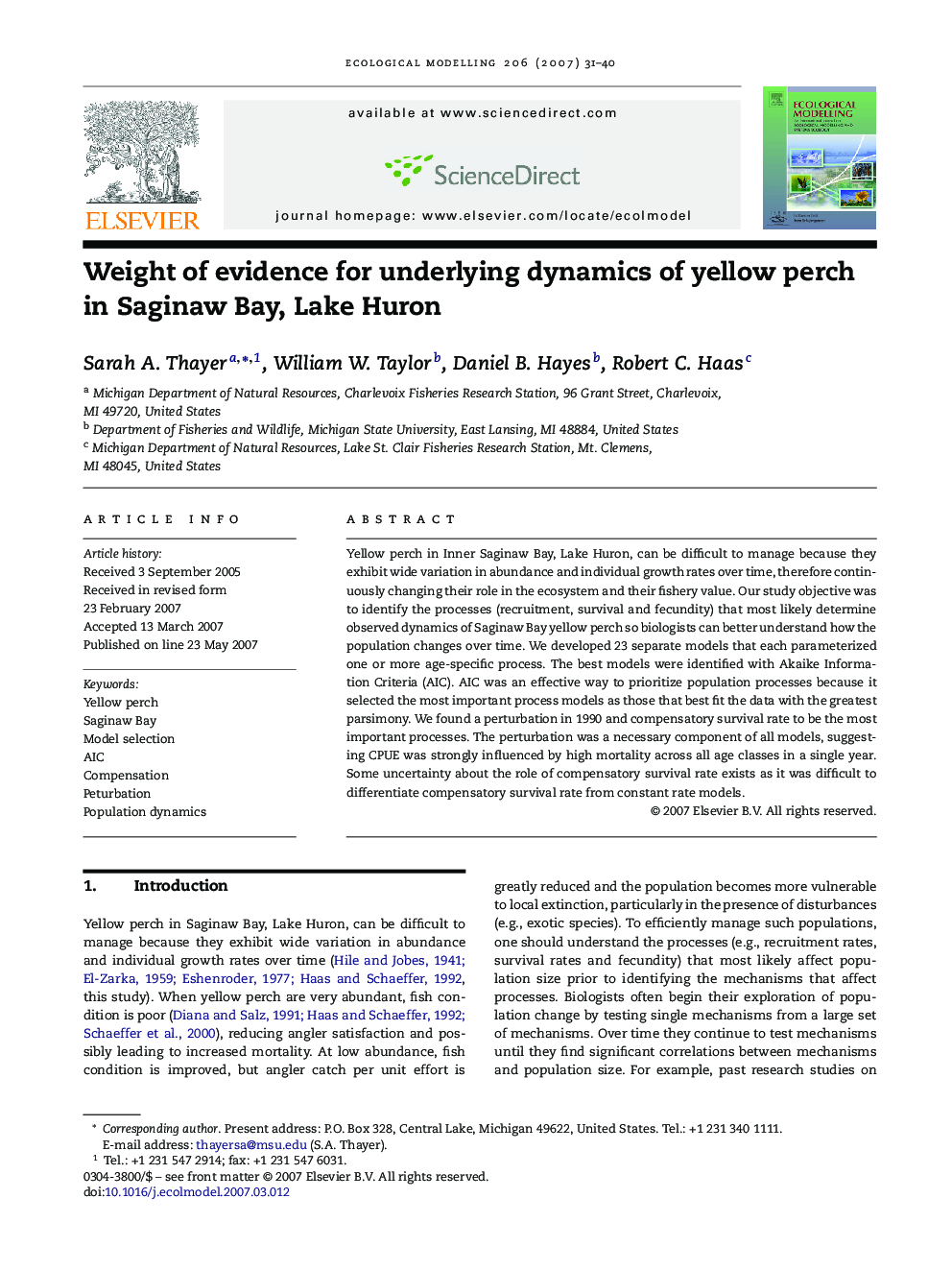| Article ID | Journal | Published Year | Pages | File Type |
|---|---|---|---|---|
| 4378710 | Ecological Modelling | 2007 | 10 Pages |
Yellow perch in Inner Saginaw Bay, Lake Huron, can be difficult to manage because they exhibit wide variation in abundance and individual growth rates over time, therefore continuously changing their role in the ecosystem and their fishery value. Our study objective was to identify the processes (recruitment, survival and fecundity) that most likely determine observed dynamics of Saginaw Bay yellow perch so biologists can better understand how the population changes over time. We developed 23 separate models that each parameterized one or more age-specific process. The best models were identified with Akaike Information Criteria (AIC). AIC was an effective way to prioritize population processes because it selected the most important process models as those that best fit the data with the greatest parsimony. We found a perturbation in 1990 and compensatory survival rate to be the most important processes. The perturbation was a necessary component of all models, suggesting CPUE was strongly influenced by high mortality across all age classes in a single year. Some uncertainty about the role of compensatory survival rate exists as it was difficult to differentiate compensatory survival rate from constant rate models.
